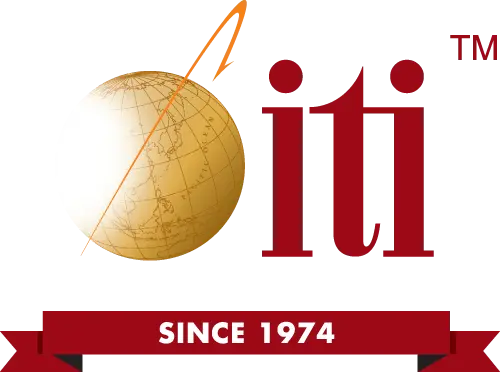
We all know there is compound risk when sourcing products from foreign manufacturers. Fortunately, these risks are not completely out of a buyer’s control. In fact, buyers today are positioned better than ever to stay ahead of risks, so long as they commit to the hard work and ongoing effort involved.
To help break down the massive topic of managing foreign manufacturing risk, we present key concepts below that you as a buyer can use to mitigate exposure in your own global supplier engagements.
Start Within: Internal Actions to Mitigate Supplier Risk
When first setting out to tackle risk frontiers involved in sourcing products globally, we always urge clients to start within. What information and awareness are currently being missed, and what actions can be directly taken to greatly reduce blind spots? Here are five suggestions on how to get started.
1. Define Risk Factors
A surefire way to shine a light on potential risk areas is by producing a supply chain map. A supply chain map can be a simple sketch or a list of all of the steps your products take through their journey from raw materials to your customers’ sites. Each step included on the map is a node of risk, as are the transition steps between these nodes.
For example, a simple supply chain map of receiving raw steel products would be made up of nodes representing the originating ore mine, initial casting plant and final structural shape foundry, with rail transportation connectors between each of these nodes.
Risk factors could include:
- Weather and safety concerns at the mine.
- Refining quality issues at the casting plant.
- Labor issues at the foundry.
- Logistics issues between any of these nodes.
2. Measure Risks and Establish Backup Plans
With the supply chain map and risk list in hand from the mapping step above, risks can start to be quantified. Some risks are truly outside our control (such as weather), while others are easily influenceable (such as packaging errors brought about by unclear instructions).
For all risks, buyers can next determine how to measure levels of acceptable and unacceptable exposure, and then create backup plans for each risk at each node in their supply chain that warrants having a Plan B.
For example, the risk of weather shutting down one ocean shipping route may drive the need to establish a backup air freight option, or the need to adjust inventory to have more contingent stock volume on hand domestically.
3. Integrate Routine Updates Into Your Agreements
Now that buyers have a more thorough understanding of the risks and resolution options involved in their particular supply chain, they can return to their manufacturing agreements to look for contractual holes that disproportionally expose them to risk. At the simplest level, we see clients adding communication statements into their contracts that target blind spots that were unrecognized until they produced their supply chain map above.
For example, a clause such as “supplier will provide weekly updates that include production progress, upstream material delivery dates and a rolling two-week production plan” can tremendously improve risk factor awareness. After all, early awareness can make all the difference in getting out in front of impending issues.
4. Maintain Geopolitical Awareness
Further to our point on awareness above, buyers who are sourcing products abroad should specifically include key externalities in their supply chain map as risk factors. Geopolitical, cultural and social factors greatly influence manufacturing conditions in other countries, ranging from active conflict situations to international tariffs and so on.
There may be little that buyers can do against foreign government actions or the like, but going back to the previous step involving backup plans, buyers can broaden their options to include things like highly diversified suppliers across different countries and force majeure insurance.
5. Perform Periodic Risk Assessments
Following these steps for internal assessment and defending against supply chain risk factors is key: Buyers should also commit to revisiting these topics frequently across the lives of each of their manufacturing engagements. Performing periodic risk assessments to update risk node maps, adjust risk thresholds at each step and adjust resolution options at hand is a necessity.
As a related side note: Many software platforms marketed today state that they can automate such supply chain risk assessment activities, but we recommend that buyers stay very hands-on with their risk management efforts until such platforms have gained more maturity and third-party accreditation.
Going Further: External Actions to Mitigate Supplier Risk
While you, as a buyer, certainly have to start any risk mitigation analysis from within, independent actions can only take you so far. Looking outward, here are five suggestions for external actions that can further elevate your global sourcing efforts.
1. Manage the Partnership
Especially for foreign manufacturers in developing countries, business is still conducted on the basis of a relationship. Transactional engagements are a Western practice, mostly, but not abroad, where interpersonal relationships reign. For this reason, domestic buyers can help manage their risk in sourcing products by simply taking extra efforts to nurture their partnerships with foreign manufacturers. When relationships are strong, it’s easier to address concerns, deal with situational awareness and find opportunities to work through issues.
2. Drive Visibility
Hitting our above point again, partnerships are vital in achieving successful international manufacturing and must be forged with good intentions for mutual benefit. Once both parties can feel the trust in the relationship, heightened visibility often evolves organically.
Many foreign manufacturers naturally guard against letting buyers see too deeply into their operation, but when trust is established, buyers are more likely to receive deeper visibility into areas such as production schedules, quality conditions, pricing metrics and emerging declines in performance.
Aside from the direct manufacturer relationship, buyers should expand their visibility in other ways. Examples include:
- Subscribing to foreign market newsfeeds.
- Obtaining local tax and trade briefs.
- Establishing communication lines with third-party resources in the area or industry.
3. Secure an Onsite Presence
Sometimes, boots on the ground are the best option toward gaining real-time, firsthand feedback on risk factors at foreign manufacturer locations. This can be a buyer’s own employee, a trusted third-party resource or a contracted representative.
In all cases, this representative should have expertise in the operations being observed, knowledge of the manufacturer’s role and responsibilities in the engagement, and near-native communication capabilities to navigate negotiations and nuance. This representative serves as a buyer’s eyes and ears, discovering and managing risk in-situ, as well as servicing the relationship in a positive manner.
4. Retain Regionally Experienced Legal Counsel
This suggestion is short and to the point: Buyers engaged in sourcing products in foreign markets must know their legal standing and options in that country; ideally with local legal representation. If a foreign government takes adverse action, there is not much that can be done from afar and without an intimate understanding of local legal remedies.
5. Work With a Sourcing Representative
Buyers can implement all of the above suggestions themselves, of course, though active risk management can be overwhelming and present a steep learning curve. As an alternative, buyers can work with strategic sourcing agents, such as ITI Manufacturing, that are experienced in facilitating international sourcing relationships.
Sourcing agents can help offload risk management burdens from buyers, using their established resources, onsite personnel and technical manufacturing control practices. Sourcing representatives can be engaged in various ways, from consulting advice only to complete single-source manufacturing supply. Even if just to ask a few questions and learn a little more about risk factors involved in a particular industry or foreign locale, buyers can utilize sourcing agents as part of a holistic risk mitigation strategy.
Feeling Confident in Sourcing Products?
If you have questions about how to mitigate risks with global suppliers, contact us. We would be happy to help you navigate the process.






